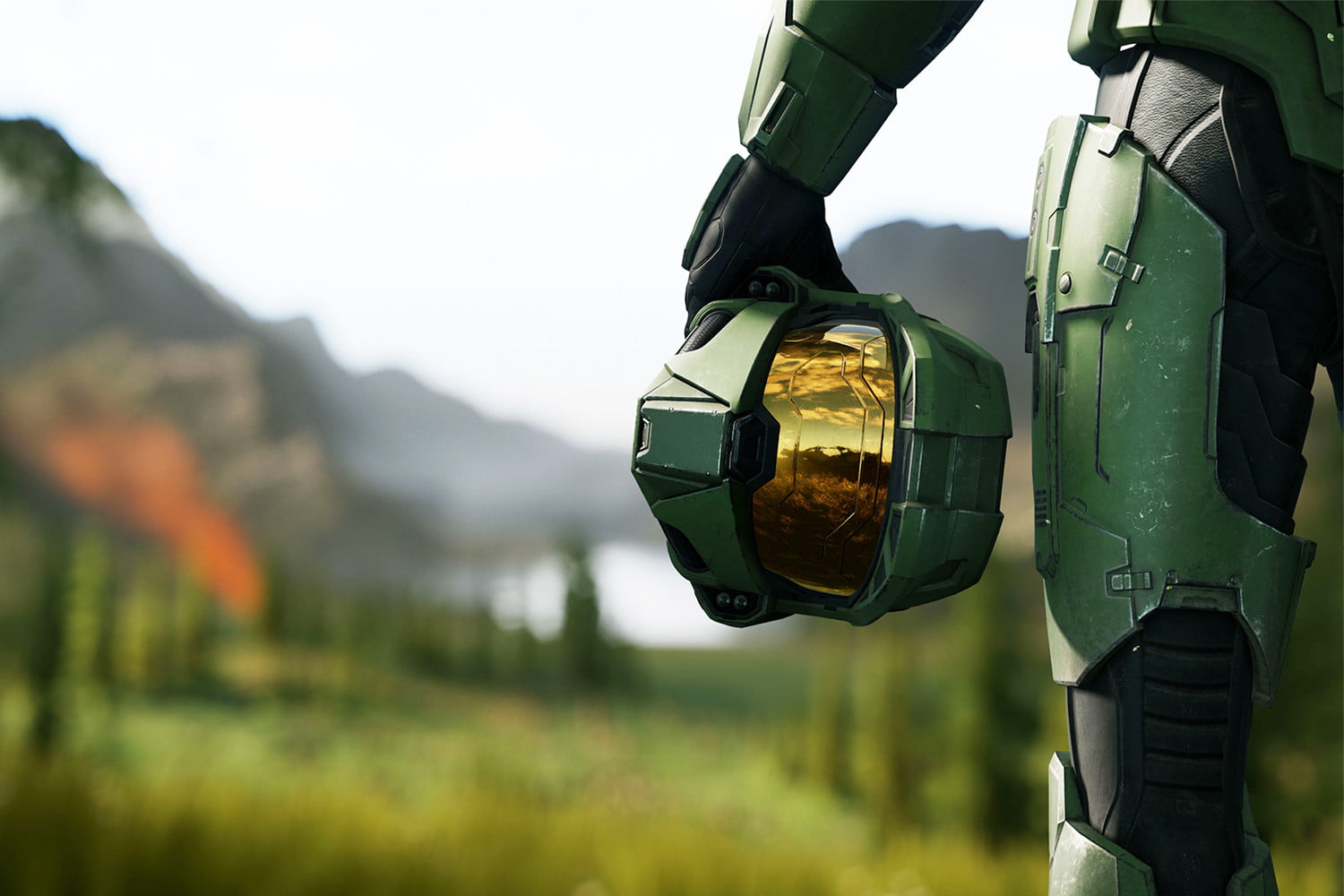The Halo series is not only one of the most important shooter franchises of all time, but it’s also the only one that managed to save an entire platform. The original Xbox launched with lackluster exclusives like Blinx: The Time Sweeper and Fuzion Frenzy that wouldn’t have given players much of a reason to pick the console up — if it weren’t for Halo: Combat Evolved. The original game spawned countless books, toys, television series, and, of course, sequels.
Nowadays, most of the Halo games — not counting the spinoffs — can be found in optimized form on the Master Chief Collection. For this list, however, we’re judging them as they were when they first launched, and not counting rereleases like Halo: CE Anniversary or Halo 2 Anniversary as distinct entries.
With 12 different games split across multiple genres, there’s a whole world of games to (re-)experience now that multiplayer Halo Infinite has launched. Here are all the Halo games ranked from best to worst, to help you decide which games to play and which to avoid like a plague of Flood.
1. Halo: Combat Evolved
The original game defined an entire generation of players, and for very good reason. Halo: Combat Evolved was the rare first-person shooter that put just as much emphasis on its universe and narrative as it did its competitive multiplayer, giving both types of players something to live.
Halo’s campaign begins with a disastrous emergency-escape onto the titular ring and quickly evolves into a mystery surrounding the ongoing conflict with the Covenant and the zombie-like Flood. Its final mission is one of the most thrilling in all of gaming, culminating in a high-speed escape sequence.
If campaign modes weren’t your thing, however, you could stick to the tremendous local multiplayer mode. “Blood Gulch” battles could list into the early morning, with friends sticking each other with grenades and running them over with Scorpion tanks. Halo: Combat Evolved was more than just the Xbox’s biggest game – it was the Xbox.
2. Halo 2
Bungie could have made a cookie-cutter sequel to Halo: Combat Evolved and fans likely would have been satisfied. Instead, the studio opted for an even more ambitious game that focused on the civil war brewing within the Covenant ranks.
For about half of the game, you’d control the Master Chief, but the other half was spent as the Covenant “Elite” warrior known as the Arbiter. It encourages players to rethink the conflict, and who was ultimately responsible for it continuing.
Halo 2 may have been even more of a milestone for the Xbox than the original game because it was the first to utilize Xbox Live. With the power of the internet, players could frag each other from across the world, and they’ve been doing it with smiles on their faces ever since.
3. Halo: Reach
After releasing Halo 3 and Halo 3: ODST, it appeared that Bungie was ready to move on from the franchise. It would later do so with Destiny, but the studio had one more game beforehand. Halo: Reach – a direct prequel to the first game – was a tragedy rather than a story of victory, but it managed to be one of the strongest campaigns in the series to date. Noble Team’s sacrifice and the titular planet’s “glassing” set the stage for Master Chief’s own story, and we’ll never forget those final futile moments against the overwhelming power of the Covenant.
Halo: Reach opted for a different style of multiplayer than its predecessors, too, allowing for customization and special suit powers that drastically changed the flow of a match. Locking your armor temporarily could make you impervious to damage, and even capable of destroying an unlucky tank. A robust Forge option also made custom maps and modes a breeze to create. Who doesn’t love Grifball?
Read our full Halo: Reach review
4. Halo 3
“Finish the fight.” The slogan had been etched into Halo fans’ minds for months before Halo 3’s launch. It was the culmination of years of buildup and conflict, with the war between the Covenant and humanity finally coming to some type of conclusion.
Bungie didn’t disappoint, with one of the most emotional and intense campaigns in the entire series, albeit with less consistency across mission than either previous game … we could have done without the Gravemind sections.
Halo 3’s competitive multiplayer was a good reason for PlayStation 3 and Wii owners to get jealous. It built on the foundation of the first two games, adding new weapons and an excellent selection of maps. Its successes were, however, slightly undermined by the release of Call of Duty 4: Modern Warfare less than two months later, and this rivalry has continued into 2019.
5. Halo Wars
The first Halo began its life as a real-time strategy game before it was shaped into the first-person shooter we know and love, and in 2009, Ensemble Studios used this iteration as the inspiration for Halo Wars.
Taking place significantly before the events of the other games, Halo Wars follows a ship called Spirit of Fire caught in its own battle with the Covenant. You can not only direct Spartans in combat, but also marines, ODST units, and vehicles, making it one of the most hectic games in the franchise.
Halo Wars was also one of the first real-time strategy games to successfully use a gamepad. The controls were streamlined and Halo Wars was somewhat simple compared to its PC contemporaries, but it showed just how much potential the Halo series truly had.
6. Halo 4
343 Industries had the impossible job of developing a new Halo game after original studio Bungie had called it quits. The task was even more difficult because Halo 3 had seemingly finished Master Chief’s story. As it turns out, there was still plenty left to tell in the Reclaimer saga, and Halo 4 saw the veteran Spartan land on a mysterious artificial planet where he would encounter the Covenant as well as a new type of enemy called the Prometheans. The campaign suffered from a repetitive structure, but it succeeded in showing a human side to John-117 that we hadn’t seen before.
Clearly influenced by Call of Duty, 343 took a different approach to Halo 4’s multiplayer by allowing players to choose their starting weapons. It seemed blasphemous, but Halo 4’s excellent map design and vehicular combat helped to make it a must-play, even for those who didn’t typically play games online.
Read our full Halo 4 review
7. Halo 3: ODST
A standalone expansion to Halo 3, Halo 3: ODST was the first game in the series to not star the Master Chief. Instead, players controlled a member of the elite Orbital Drop Shock Troopers in an investigative mystery in New Mombasa.
It’s different than the other shooters and puts more emphasis on tactics than all-out chaos, but there is still plenty of the alien-murdering goodness you’ve come to expect. ODST contained the multiplayer mode from Halo 3 instead of including its own, but it did include additional maps and the Firefight mode also found in later games.
8. Halo 5: Guardians
Halo 4 seemed to have placed the series on the right track, with a clear enemy to battle and a conflict brewing within Master Chief. This made it so odd that 343 chose to take almost all of the focus off of the character and instead put it on Spartan Locke, a newcomer attempting to bring the Chief to justice.
It’s in Halo 5: Guardians that the story went especially off the rails, and not always for the better. But the varied mission design and best-in-class audio and visual design helped to still make it worthwhile.
Halo 5: Guardians also saw the biggest changes for multiplayer, which used an aim-down-sights mode for more accurate firing, as well as new Spartan abilities to alter the course of a battle. It brought the massive Warzone mode, as well, which included vehicles and AI-controlled characters. Leaving vehicles out of the arena-style multiplayer ultimately made it feel incomplete.
Read our full Halo 5: Guardians review
9. Halo Wars 2
Who knew the Spirit of Fire would still be important so many decades after its first mission? In Halo Wars 2 – set after the events of Halo 5 – the crew finds themselves thrown into the middle of a conflict involving a rogue Brute that could have implications for the entire solar system.
Focusing on different elements of the Halo universe but still connecting to the main storyline, Halo Wars 2 is essential for longtime fans, but it offers very little innovation. The basic streamlined real-time strategy remains virtually unchanged, aside from offering some new multiplayer modes.
Read our full Halo Wars 2 review
10. Halo: Spartan Strike
Perhaps because of the lukewarm reception to Spartan Assault on consoles, Microsoft chose to not release the follow-up Halo: Spartan Strike on Xbox at all. That’s a shame because the sequel was the more interesting game.
It kept the same perspective and basic gameplay loop of Spartan Assault, but with the Promethean enemies featured so prominently and because it had more varied environments, it was a more ambitious game worthy of the Halo name. Unfortunately, the game is no longer available on iOS, but it can still be purchased from Steam.
11. Halo: Spartan Assault
A top-down twin-stick shooter rather than a first-person game, Halo: Spartan Assault was designed with mobile devices in mind, and as such, it’s simply not as deep as its console and PC siblings. You battle the Covenant across short missions, using your weapons and grenades to flush them out, and though it does feature one of Halo 4’s most important characters, it doesn’t do anything interesting with the series’ lore or gameplay. On the go, it does the job, but the ports for the Xbox and PC are underwhelming.
Read our full Halo: Spartan Assault review
12. Halo: Fireteam Raven
Halo: Combat Evolved was exclusive to Dave and Buster’s in 2018, allowing up to four people to play as ODST troopers on a mission to defend the Pillar of Autumn.
The maps look even more impressive in high resolution on a 4K 130-inch screen than previous Halo missions, but their layout is similar. Much like in earlier Halo game versions, you’ll be fighting classic Flood and Covenant baddies as you meet characters like Captain Keyes and Master Chief.
Unfortunately, the short-lived experience is unnecessarily challenging. You can’t hide to reload during battles, and the pistol and shotgun are weaker than they were in the original game. The graphics have improved, though.
You can play these six campaigns in about an hour, and it will cost you anywhere from $20 to $30, depending on the arcade where you’re playing. Holding a physical gun and killing Covenant “in person” are novel perks that hardcore fans will love. Plus, you can scan a QR code to compare your score with others on Halo Waypoint once you finish your game.


